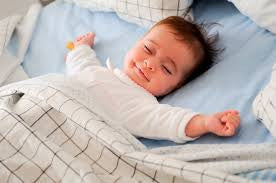Your Body Does Incredible Things When You Aren't Awake
March 05, 2016

Sleep is anything but a waste of time. While many people think of catching Zzs as the body "shutting off" until morning, nodding off actually activates a complicated process that helps you feel rested and healthy the next day. Scientists divide sleep into four stages -- each full sleep cycle takes about 90 minutes to complete, meaning we cycle through roughly five rotations during 7.5 hours between the sheets. The amount of time spent in each stage of sleep varies by cycle, with more deep sleep taking place earlier in the night and more dreaming sleep in the second half of the night. In honor of Sleep Awareness Week, here's a closer look at some of the amazingly complex things your body does every night.
Graphic by Jan Diehm for The Huffington Post. See full-size image here
Stage one: The earliest stage of sleep is one between wakefulness and slumber. It's easy to be awoken from stage one sleep and, if you are, you might even feel like you haven't slept at all. Your eyes move slowly back and forth as your muscles relax and sometimes even twitch, a phenomenon called a hypnagogic jerk.
Stage two: Philip Gehrman, Ph.D., assistant professor of psychiatry at the University of Pennsylvania, dubs stage two sleep "average sleep" -- it's not too deep, not too light, and it's where you spend about half the night. As you move into stage two sleep, you lose a sense of your surroundings and your body temp drops, according to the National Sleep Foundation. Brain waves are slow (with some rapid bursts) and your heart rate and blood pressure slow down and regulate. That means, for much of the night, your heart and vascular system are getting a much-needed rest, which might help to explain the manycardiovascular benefits of shuteye.
Stage three: "This is our deepest sleep," Gehrman says of stage three (which used to be separated into stages three and four). "It's also called our slow-wave sleep because our brain waves are these slow, high-amplitude waves." During this restorative stage of sleep, blood pressure drops, breathing slows down, blood flow moves to the muscles and tissue is repaired, according to the National Sleep Foundation. Hormones, such as the human growth hormone, are secreted at this time as well. Stage three is also where parasomnias, such as sleep walking, talking or eating, take place. Since this is the deepest sleep (and the one that makes you feel well-rested and energetic the next day), it's also the hardest stage to be woken from, Gehrman says. About 20 percent of the night is spent in deep sleep, and it mostly happens in the first half of the night.
REM sleep: While bland dreams can occur in other stages of sleep, REM sleep is where we see vivid, imaginative dreams, Gehrman explains. He says experts often call this stage "paradoxical sleep" because the body is asleep but the brain looks similar to how it does when you're awake. As the name Rapid Eye Movement suggests, the eyes quickly dart back and forth during this stage of sleep, and breathing and heart rate both become more varied. Muscle groups also become paralyzed to keep you from acting out your dreams. The first round of REM is typically fairly short and occurs at the end of the first sleep cycle -- but each session gets longer throughout the night as deep sleep in stage three gets shorter. "Most of our deep sleep happens in the first half of our night, most of our REM sleep happens in the second half of the night," Gehrman says. And like deep sleep, we spend about 20 percent of the night in REM.
Sleep also has some functions that aren't stage-specific (or at least we don't yet understand what stage they occur in). One of those is regulation of the appetite hormones; a full night's sleep is thought to help the body suppress ghrelin, a hunger hormone, and stimulate leptin, which controls appetite. Snoozing also seems to be related to forming the pathways in the brain for memory and learning, Gehrman explains. And while it used to be thought that this occurred only in REM sleep, newer research is painting a more complicated picture, with other stages of sleep playing important roles in the process in different ways. What's more, a compelling mouse study published in October of last year showed that the brain's waste-flushing system(called the glymphatic system) may be close to 10 times more active when we sleep compared to when we're awake.
It's important to note, too, that sleep cycles aren't an exact science, and may not be precisely the same from person to person or even night to night. Several factors including age and sleep deprivation, Gehrman says, can push the body to spend more or less time in a given stage.
Laura Schocker - Executive Editor, Healthy Living
Share:
Leave a comment
Comments will be approved before showing up.





